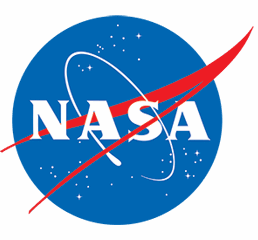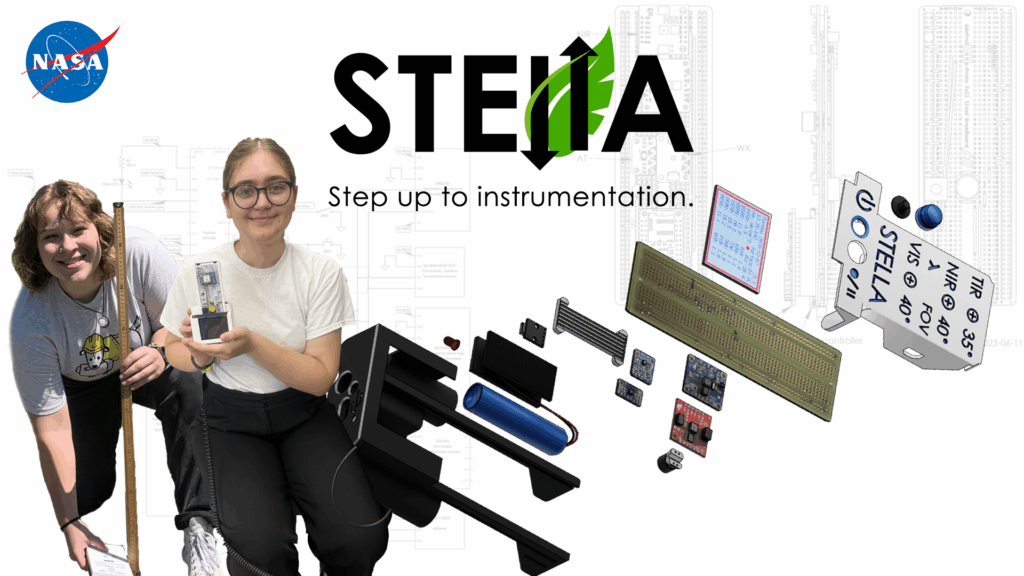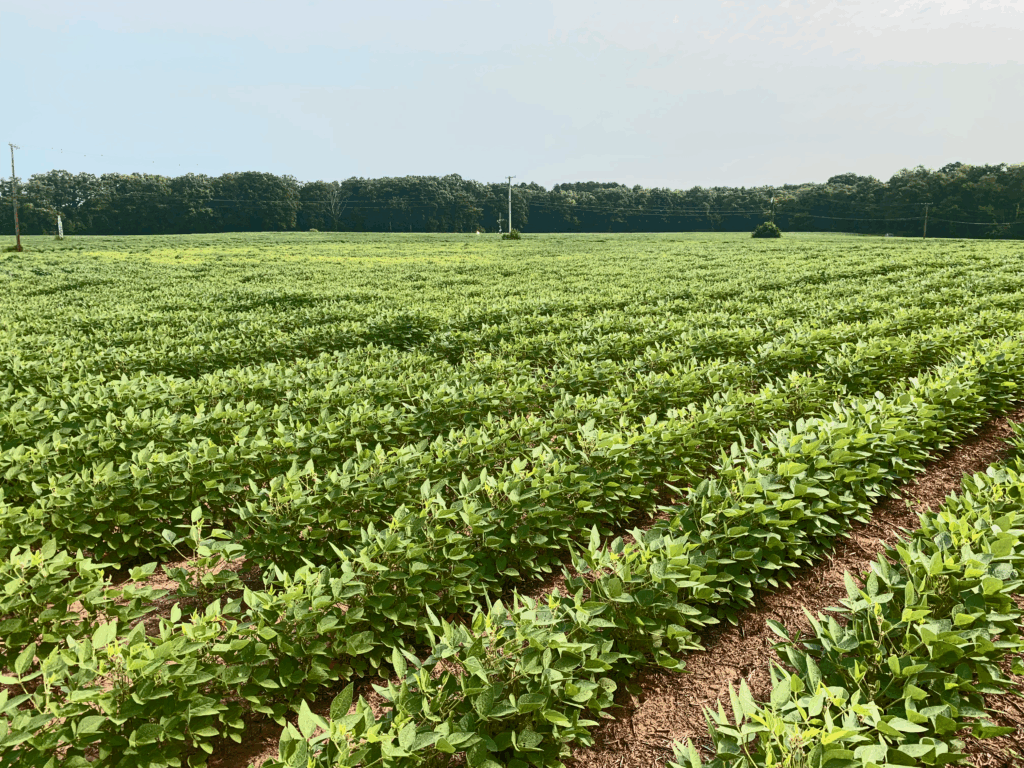From Environmental Science Student to STELLA Innovator: Bianca's Journey
Video Summary
“Because it’s a low cost instrument, I feel comfortable messing with different sensors and trying to build my own version of STELLA with different codes and different parameters.”
A Serendipitous Meeting with Innovation
Bianca Cilento’s path to becoming a STELLA advocate began with a simple desire to build her own spectrometer. As an environmental science student pursuing a combined bachelor’s and master’s degree program, she had discovered her passion for interdisciplinary approaches to scientific problems during an internship in Sweden. There, she worked with plant compositions using a pseudo spectrometer called the Colorsnap tool, combining remote sensing with ecology to study changing Arctic landscapes.
“I was really excited about this project and thought, this is great – I’m going to get my masters and get a PhD and make my own spectrometer that works a little bit better, looks at near infrared,” Bianca recalls. But fate had other plans. When she met Mike Taylor and was introduced to STELLA, she realized she had found “everything I wanted to build and more.”
This discovery transformed her master’s thesis into “Quantifying Landscape Change using different spectrometers and imagery,” allowing her to compare different tools, collection methods, and mapping techniques. The project perfectly matched her love of looking at problems from multiple angles using interdisciplinary thinking.
Overcoming Initial Intimidation
Despite STELLA’s reputation for accessibility, Bianca’s first encounter with the device was daunting. “Honestly, I was a little overwhelmed. I did not have a very strong coding or manufacturing background, so I was a little scared at first,” she admits. The solution came from an unexpected source – her older brother helped her build her first STELLA.
But the initial fear quickly gave way to appreciation. “It actually was not as bad as I was expecting. It was really easy to put together and use,” Bianca discovered. Even when she encountered problems in the field due to her own mistakes, the troubleshooting process became part of the learning experience rather than a barrier to success.
This experience opened her eyes to STELLA’s potential for other early career scientists and researchers who might not have access to high-cost spectrometers – a realization that would shape her ongoing work with the platform.
Transcript
“I think it can be really helpful to like a lot of early career scientists, early career researchers who might not have access to high cost spectrometers.”
A Tool That Grows With You
What makes STELLA particularly powerful, according to Bianca, is its adaptability. “STELLA is what you make of it,” she explains. As someone who wasn’t a confident programmer, she found the pre-written code accessible while still offering opportunities for customization. “Being able to have the code set up for me, I can really look into it and learn what commands are helpful, where, how to modify.”
The platform’s modularity proved essential to her research. She could add different sensors, incorporate GPS capabilities, and mix and match components based on her specific needs. This flexibility allowed her to enhance her programming skills incrementally, adding commands to make her research easier without being overwhelmed by starting from scratch.
Learning to Fail Forward
Perhaps the most unexpected skill Bianca developed was what she calls “failing gracefully.” This lesson came while attempting to write code that would automatically cycle through different gain and integration time combinations, eliminating the need to manually adjust settings each time she turned on STELLA.
“It was really hard. I didn’t expect how many times I’d have to try something, test the code – it didn’t work, try it again,” she reflects. “It really taught me how to just be patient. It’s okay that it doesn’t work the first few times.” This experience with iterative problem-solving became invaluable preparation for professional research environments where persistence and patience are essential.
The low cost of STELLA made this experimentation possible. “Because it’s a low cost instrument, I feel comfortable messing with different sensors and trying to build my own version of STELLA with different codes and different parameters,” Bianca notes. This comfort with experimentation, enabled by affordability, became a crucial part of her learning process.
From User to Developer
After completing her master’s degree, Bianca joined EagleView, an aerial imagery company in Rochester, New York, where she applies her image processing skills professionally. But her relationship with STELLA didn’t end with graduation. Instead, she began collaborating with Paul Mirel and Mike Taylor to evaluate STELLA’s potential as a serious scientific instrument, testing its consistency over time and comparing it against other spectrometers.
This work led to an important realization: while her STELLA measurements were “great and valuable,” they could have been enhanced with better calibration protocols. “I think it would have given my measurements a little bit more credibility,” she reflects. This insight sparked her current focus on developing classroom calibration protocols that could advance science education and research.
Bringing Science to Everyday Spaces
Bianca’s approach to protocol development reflects her commitment to accessibility. She designs and tests everything in her one-bedroom apartment, ensuring that procedures can be replicated by students with limited space, time, and budgets. “I’m practicing it in my apartment to try to understand what materials I can kind of scrounge together to make it low cost and to make sure that it can be done under time constraints,” she explains.
Her creative solutions demonstrate the ingenuity that STELLA encourages. For testing reflector reliability, she uses a nightstand adjusted to the right height, a lazy Susan for rotation, styrofoam crosshatched to identify the center, a protractor for angle measurement, and dental floss for manual rotation. A selfie stand holds the STELLA, while an unused art easel supports targets.
This DIY approach isn’t just about cost savings – it’s about proving that quality science can happen anywhere, with materials anyone can access.
The Science of Calibration
Bianca’s calibration work addresses a fundamental challenge in scientific measurement: how do you ensure your instrument is giving you accurate, comparable data? Her protocols tackle multiple variables that can affect STELLA’s performance, from different light levels and temperatures to various target materials and incident angles.
One particularly important aspect is measuring “extraneous light” – the unavoidable illumination present even in seemingly dark rooms. “All the windows are down, all the curtains are up, all the lights are off, but there’s still light coming from somewhere because we don’t live in a vacuum,” she explains. By saturating the sensor and measuring this background light under different conditions, researchers can account for it in their data analysis.
Her work with reflector materials has tested everything from basic styrofoam to professional white references from photo studios, with plans to evaluate construction paper, whiteboards, and mirrors. Each material offers different advantages in terms of cost, availability, and optical properties.
Balancing Rigor with Practicality
Creating protocols that maintain scientific accuracy while remaining classroom-friendly requires careful balance. Bianca’s approach emphasizes clarity and repeatability while avoiding overwhelming detail. “It’s really important to make sure that it’s clear and detailed while still being concise,” she notes. “There’s some steps that are a little bit implied that you don’t necessarily need to repeat – that just bogs things down.”
The key is identifying which variables truly matter for reproducible results. When describing room darkness measurements, for example, she specifies that lights must be off and curtains must be closed – details that might seem obvious but are crucial for consistent results across different users and environments.
A Vision for Broader Impact
Bianca’s excitement about STELLA extends far beyond her own research. Working now at EagleView while continuing her STELLA research, she sees the instrument’s potential to democratize scientific access across multiple fields. “It’s available for students, researchers, teachers, professors. It’s a great way for anybody to get involved in science,” she enthuses.
Her mother’s work in schools has given her direct insight into educators’ reactions. “All the different teachers I talk to are like, ‘Wow, tell me more about this tool,'” she reports. Being able to demonstrate quick data analysis showing differences between plants, asphalt, and concrete creates immediate engagement and understanding.
Looking Toward the Future
The culmination of Bianca’s calibration work may be a research paper that establishes STELLA’s credibility as a scientific instrument rather than just an educational tool. “Paul and I are working really hard to test all these calibration methods and see how consistent the STELLA is across all these different parameters,” she explains.
This research addresses a crucial question for any emerging scientific instrument: How reliable is it? By having different groups test similar parameters under various environmental conditions, the scientific community can better understand STELLA’s capabilities and limitations.
The Ripple Effect of Accessibility
What excites Bianca most about STELLA is its potential to get people excited about science through hands-on, real-world applications. “I think having something so hands on in a real world application is what will get kids and people excited about science, and that’s what we need,” she reflects.
Her journey from intimidated student to confident developer illustrates STELLA’s power as both an educational tool and a research platform. By removing traditional barriers – high cost, complex programming requirements, need for specialized facilities – STELLA opens scientific exploration to anyone willing to learn and experiment.
A Model for Accessible Innovation
Bianca’s story demonstrates how accessible scientific tools can transform not just individual learning experiences, but entire approaches to research and education. Her work developing calibration protocols ensures that future STELLA users can achieve greater scientific rigor while maintaining the platform’s essential accessibility.
Her apartment-based testing protocols prove that quality science doesn’t require expensive laboratories or specialized facilities – just creativity, persistence, and the right tools. As she continues her professional work in aerial imagery while advancing STELLA’s scientific capabilities, Bianca exemplifies how accessible innovation can create pathways for the next generation of scientists and engineers.
Through her journey from overwhelmed student to confident researcher and protocol developer, Bianca has become living proof that STELLA’s promise of democratizing science education and research is not just aspirational – it’s achievable, measurable, and already happening.




